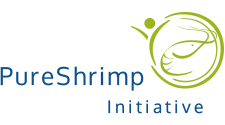Mangrove restauration projects
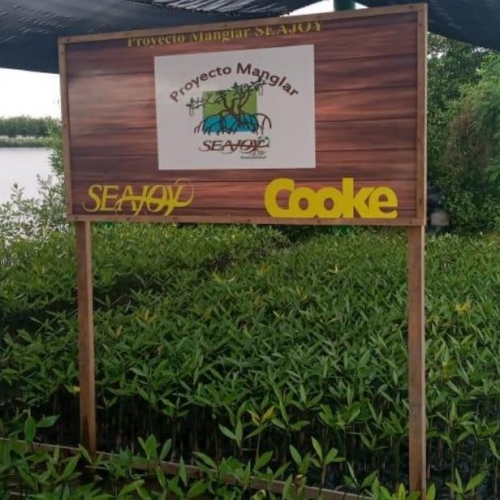
Seajoy mangrove project – HONDURAS and NICARAGUA
Seajoy
General Objective: Promote a Sustainable Production Policy with the Environment, through specific actions that benefit the conservation conditions of the Mangrove Forest in the companies of the Seajoy Group in Honduras and Nicaragua
The Mangrove Project was born as an initiative of its own in the year 2007 by the Seajoy Group, where clear objectives focused on the care and preservation of the Mangrove ecosystem, where we develop measures essential to motivate employees and residents surrounding areas to implement measures that allow the recovery of this important species and the relevance that its preservation brings for the biodiversity of the area. These practices are aligned with our group’s sustainability strategy.
The mangrove grows along the coasts in tropical and subtropical regions, where it plays important roles in supplying timber and non-timber forest products timber, coastal protection, conservation of diversity, habitat, spawning grounds and nutrients for a variety of fish and shellfish. Seajoy -Cooke Group, has managed to establish mechanisms that allow the development and protection of this type of estuarine ecosystems, adding the protection of the
biodiversity that the areas occupy as biological corridors currently reforested with Rhizophora Mangle.
The program was born in 2007 as part of strengthening Seajoy’s environmental policy, supporting its communities in the preservation and conservation of its coastal marine resources in the Gulf of Fonseca. During these 15 years we have planted 987, 897 mangrove propagules of the Rhizophora species at our Seajoy operations in Honduras and Nicaragua.
Partners in this project:
Seajoy
Cooke
Morubel
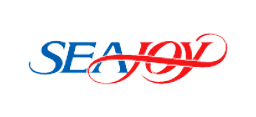

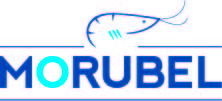
Different points of the Gulf of Fonseca between Honduras and Nicaragua
SPECIFIC OBJECTIVE:
• Develop reforestation sessions where stakeholders are involved to promote active participation in the management and conservation process.
• Contribute in a sustainable way to the communities surrounding the Aquaculture Farms through the restoration of the mangrove forest.
• Comply with Environmental Sustainability policies and agreements to which the Seajoy group is subscribed.
• Promote alternatives on Systems and Methods of natural regeneration and reforestation, to recover deforested areas with the Red Mangrove species.
Adherence to the Sustainable Development Goals
PROGRESS
2007: The Mangrove Project was born as an initiative of the Seajoy Nicaragua Group, later, in 2014, it moved to the production centers of Honduras.
2014: Mangrove plantings have been carried out through the Mangrove Project, an approximate 450,000 mangrove propagules are estimated, including the HND + NCA production farms.
2018: On December 26 of that year, the agreement is signed and Cooperation ICF-RFP-02-2019 in conjunction with the Institute of Forest Conservation (ICF) of Honduras where Seajoy is committed to ensuring the care and conservation of the Mangrove Forest and supporting the Sustainable Development Goals.
2020: The farms and hatcheries of the Seajoy group in Nicaragua and Honduras have managed to plant approximately 890,000 Mangrove seedlings up to this date.
2021: In the year 2021 we reached the figure of 987, 897 mangrove seedlings planted in different points of the Gulf of Fonseca between Honduras and Nicaragua.
Mangrove Nursery:
In order to comply with the scope of the Project, there are 8 nurseries in each of the Seajoy operations:
1. Larvipac (Honduras)
2. Biocultivos Marinos (Honduras)
3. Fonseca Aquaculture (Honduras)
4. Inversiones de Exportación (Honduras)
5. Aquacultura Torrecillas (Nicaragua
6. Acuicola Real (Nicaragua)
7. Acuicola La Virgen (Nicaragua)
8. Acuicola Los Piches (Nicaragua)
9. Semillas Acuáticas (Nicaragua)
Which cover the capacity to house mangrove propagules depending on the inherent conditions of the Farm (capacity varies by company)
Collection of propagules and planting:
The collection of propagules was carried out directly, mainly in the area of the estuaries adjacent to the projects, for this two collection methods were used:
a) Direct collection, this already has an advanced degree of maturity for its germination.
b) Collection directly from trees with a measurement greater than 25 cm. Care and Maintenance: The mesh used
in nurseries has 80 % light input, which in turn helps prevent wilting caused by radiation.
Seedlings are irrigated with water from the Estero. In the case of Multisites Seafood International Company, use
a tidal inflow irrigation system. Several water redirection channels have been made, which allow the complete irrigation of the seedlings.
RESULTS
During these 15 years, we have followed the methodology of direct seeding and in nurseries, Mangrove reforestation campaigns have been successfully developed in specific sites, both for the HND and NCA companies, the results obtained from this distinguished program reflect the commitment of the Grupo Seajoy for the productive and environmental development where the Shrimp farms are located, programs that are aligned with the organization’s Sustainability strategy.
Conclusions:
1. Constant monitoring at the production site by the Head of Environmental Sustainability to strengthen internal planting programs that are carried out by the collaborators.
2. To extend to more interested parties the sowings that arecarried out at the production site, obeying the commitment macro that the Seajoy group has established over the years through this project, involving schools, communities and institutions governmental.
3. Contemplate specific issues in the 2022 annual training plan referring to the importance of the mangrove, benefits, nursery management, among others, taking as a reference the magnitude and importance of the Project for the company and surrounding communities.
4. Meet this 2022 the goal of reaching 1,000,000 million mangrove plants planted in the coastal marine systems
of the Gulf of Fonseca to continue promoting the protection, promotion, education, reforestation of the mangrove to achieve sustainability that allows systems Seajoy production facilities continue to produce in harmony with their coastal marine environment.
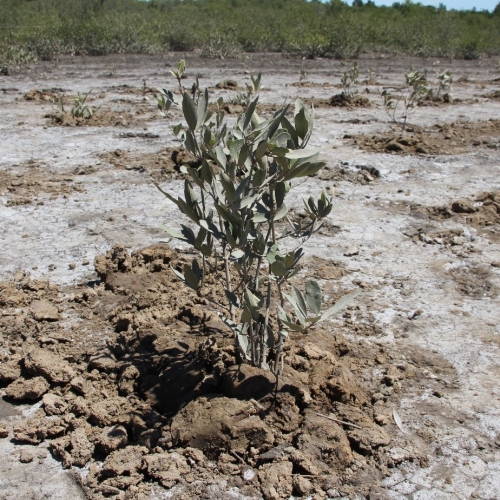
Nicoya mangrove project – COSTA RICA
Alnatura
Mangrove forests are pivotal to keeping a coastline intact, reduce the impact of waves, protect against flooding and prevent coastal erosion. Moreover, they serve as the perfect nursery for numerous fish and shellfish species. Hence our interest and support in mangrove projects.
In this project we support the renaturalization and reforestation of 100ha in the former saline fields of the Nicoya peninsula in Costa Rica.
Several partners are actively involved in this project of the Pure Shrimp Initiative, including the German governmental organization for international cooperation, GIZ, and the Costa Rican conservation agency, SINAC. The latter acts as the supervisory body and will ensure that the forests are preserved beyond the duration of the project. Once planted, the mangroves may never again be used for alternative purposes.
The environmental protection organizations (NGO’s) GCS, FUNDECODES and ASEPALECO are supporting the project with their expert know-how and educational programmes. The project is being funded by companies German organic retailer Alnatura. Hopefully they will be joined by many more retail corporations in the near future. Additional project partners to support this project would be very welcome.
Partners in this project:
ASEPALECO, Asociación Ecológica Paquera Lepanto Cóbano
bluesensus, consulting for sustainability and seafood
FUNDECODES, armonizando desarrollo y conservación
GCS, Global Conservation Standard
GIZ, Deutsche Gesellschaft für Internationale Zusammenarbeit
The former saline fields of the Nicoya peninsula in Costa Rica
The objective of this project is the gradual renaturalization and reforestation of 100ha of mangrove forest by 2025. The project covers a period of 10 years.
Up to now 50ha have been restored. In 2015, German organic retailer Alnatura joined the project. Alnatura markets organic shrimp from Costa Rica under a project-related campaign: 15 cents from every pack sold are used to help funding this project.
The funding needed over the next 10 years is estimated at US$ 600,000. This can only be achieved with the support of additional trade partners.
Shore and sustainability consultancy Bluesensus visited the area in March 2017 to evaluate the progress of the mangrove project, accompanied by SINAC, GCS, ASEPALECO and FUNDECODES.
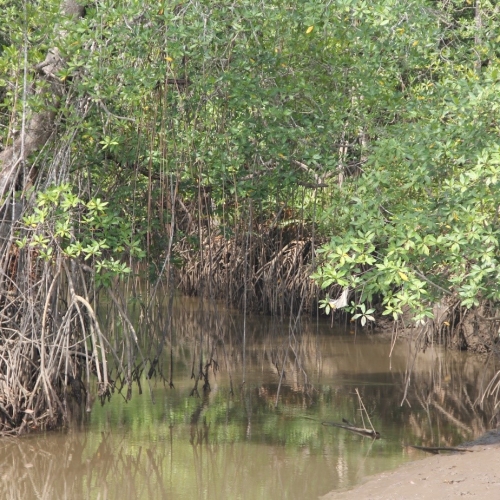
Terra Sierpe mangrove project – COSTA RICA
Aldi Süd
Mangrove restoration of up to 50 ha in the area of Terra Sierpe in Costa Rica.
Under the supervision of the Costa Rican conservation agency SINAC and in collaboration with the local NGO Osa Conservation, up to 30ha of mangroves will be restored as part of the 3 year project.
Partners in this project:
GIZ, Deutsche Gesellschaft für Internationale Zusammenarbeit
Project coordinator
The area of Terra Sierpe at the Osa peninsula in Costa Rica.
This project was kicked off in March 2017, during a visit of the area by sustainability consultancy Bluesensus and a two-day workshop with all local stakeholders involved, supported by GIZ. A rough timetable was set and responsibilities were identified and assigned. A suitable area will be defined. Local follow-up will be done by Rainbow Export Processing.


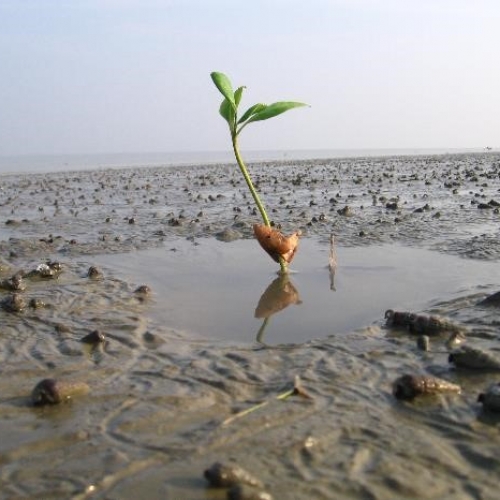
Sundarbans mangrove project – INDIA
Alnatura/Aldi Süd
Mangrove restoration of up to 30ha in the Sundarbans area, a natural region in southern Bangladesh and the extreme southern part of the Indian state of West Bengal.
In 2016, 1ha of reforestation in the Sundarbans area was done as an initial step, funded by Ristic GmbH and German organic retailer Alnatura.
In 2017, a further afforestation of up to 30ha will be initiated. This is part of the 3 year ALDI Süd project, which also includes mangrove afforestation in Costa Rica, the initiation of a Fishery Improvement Program in India and social programs in India and Costa Rica.
The NGO joining this project is Nature, Environment and Wildlife Society (NEWS). NEWS has been working with the local village communities in the Sundarbans for many years, above all with women at mangrove nurseries and in reforestation projects.


Apart from the mangrove restoration project, an integrated mangrove-shrimp farming demonstration project (up to 9ha farm area) as well as community work with the objective to improve income opportunities will be set up. The local team from the WBBT project (Blue Sea Aquaculture Pvt. Ltd.) will support NEWS in the development of the pilot for the integrated mangrove-shrimp farming sub-project. Within this project, they will also develop the local market for the shrimp.
General coordination of this project lies with sustainability consultancy Bluesensus.

Partners in this project are:
Blue Sea Aquaculture
Project coordinator
The world’s largest interconnected mangrove forest, Sundarbans, covers an area of 1 million ha south of the Himalayas at the delta of four rivers converging in Bangladesh and India. The Sundarbans National Park in the Indian state of West Bengal covers about 133,000 ha and has been a UNESCO protected site since 1987.
The project kick-off is scheduled for May 2017. Sustainabiltiy consultancy Bluesensus, will visit the area to define and finalize the project details with NEWS and other local stakeholders.


